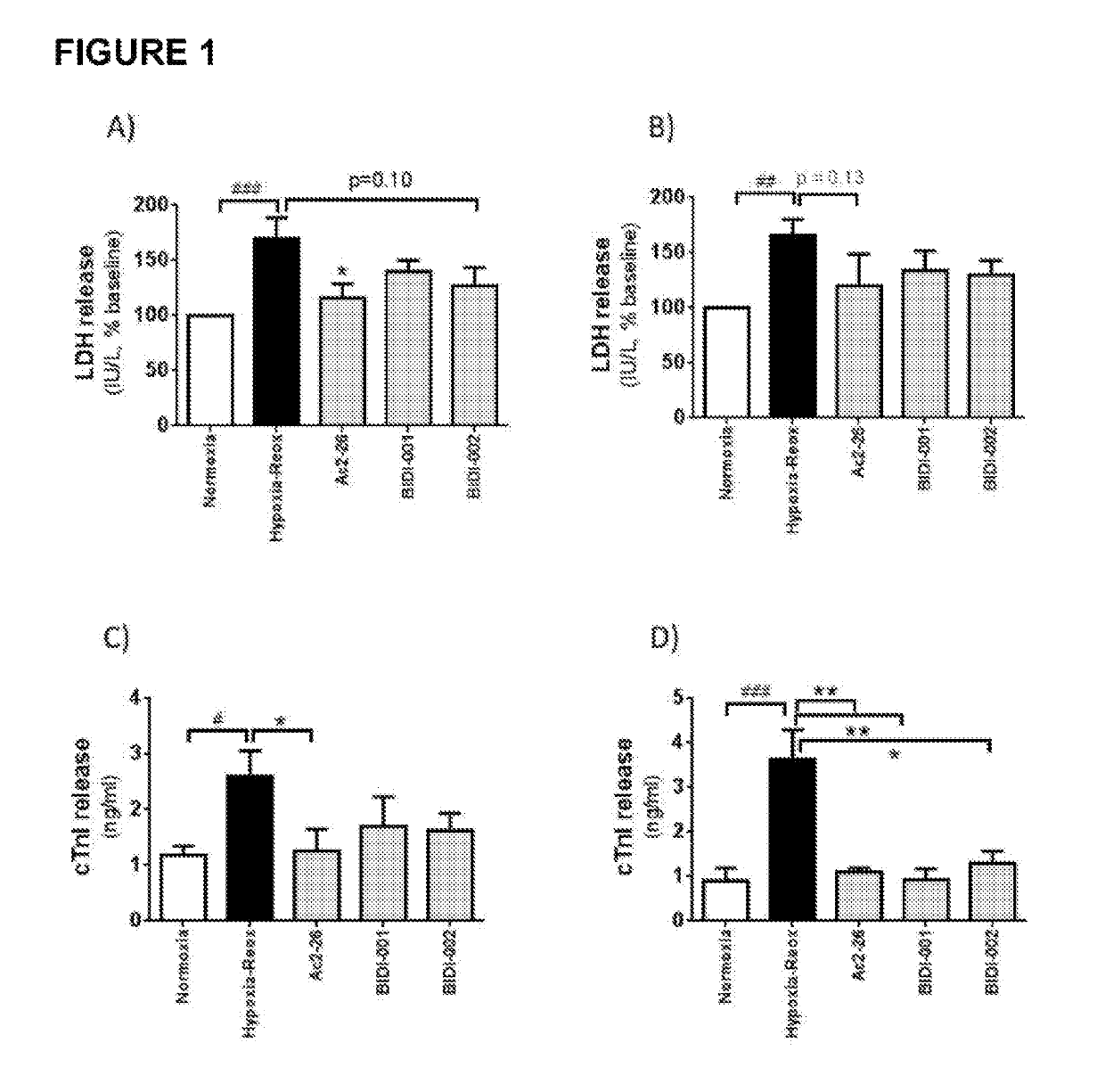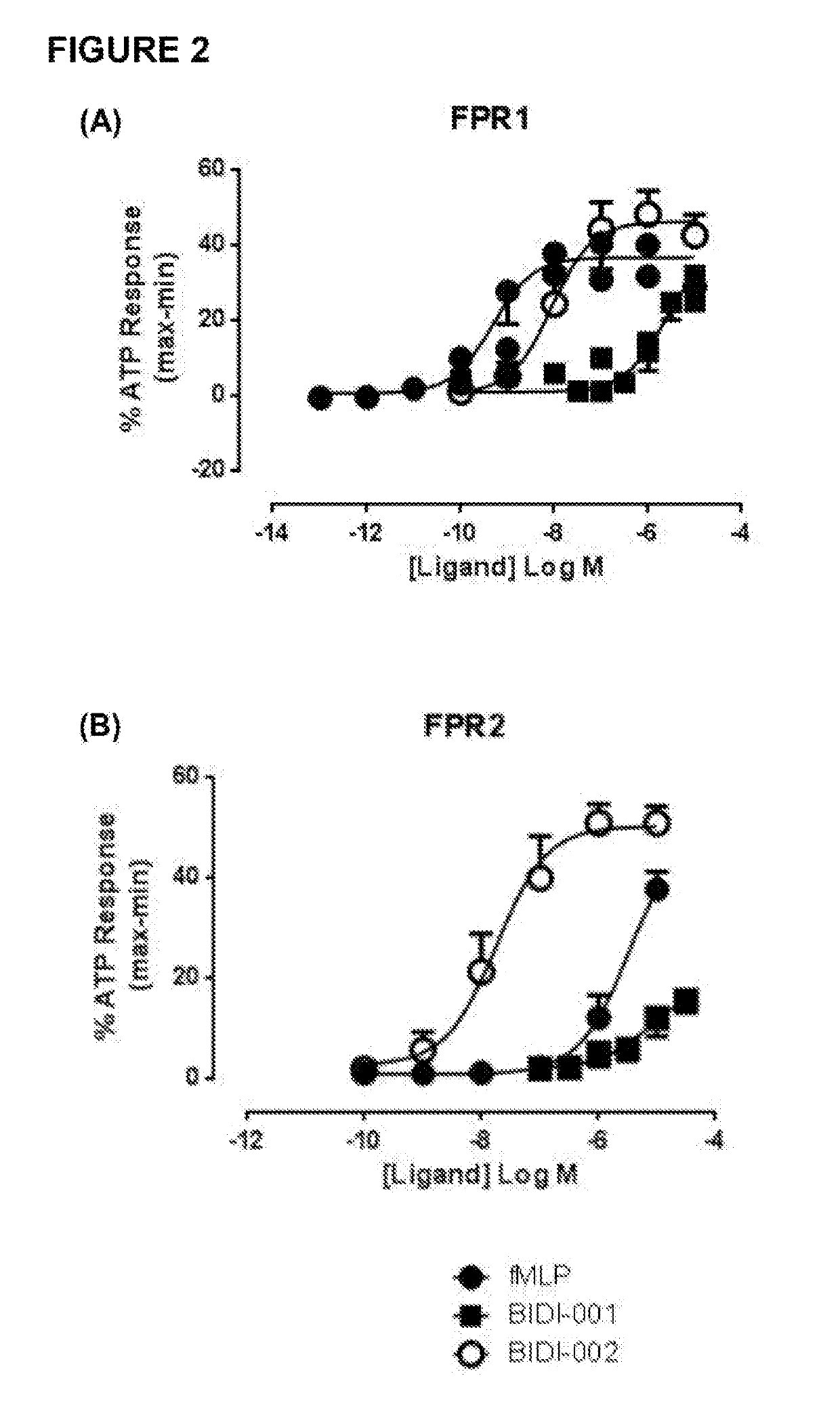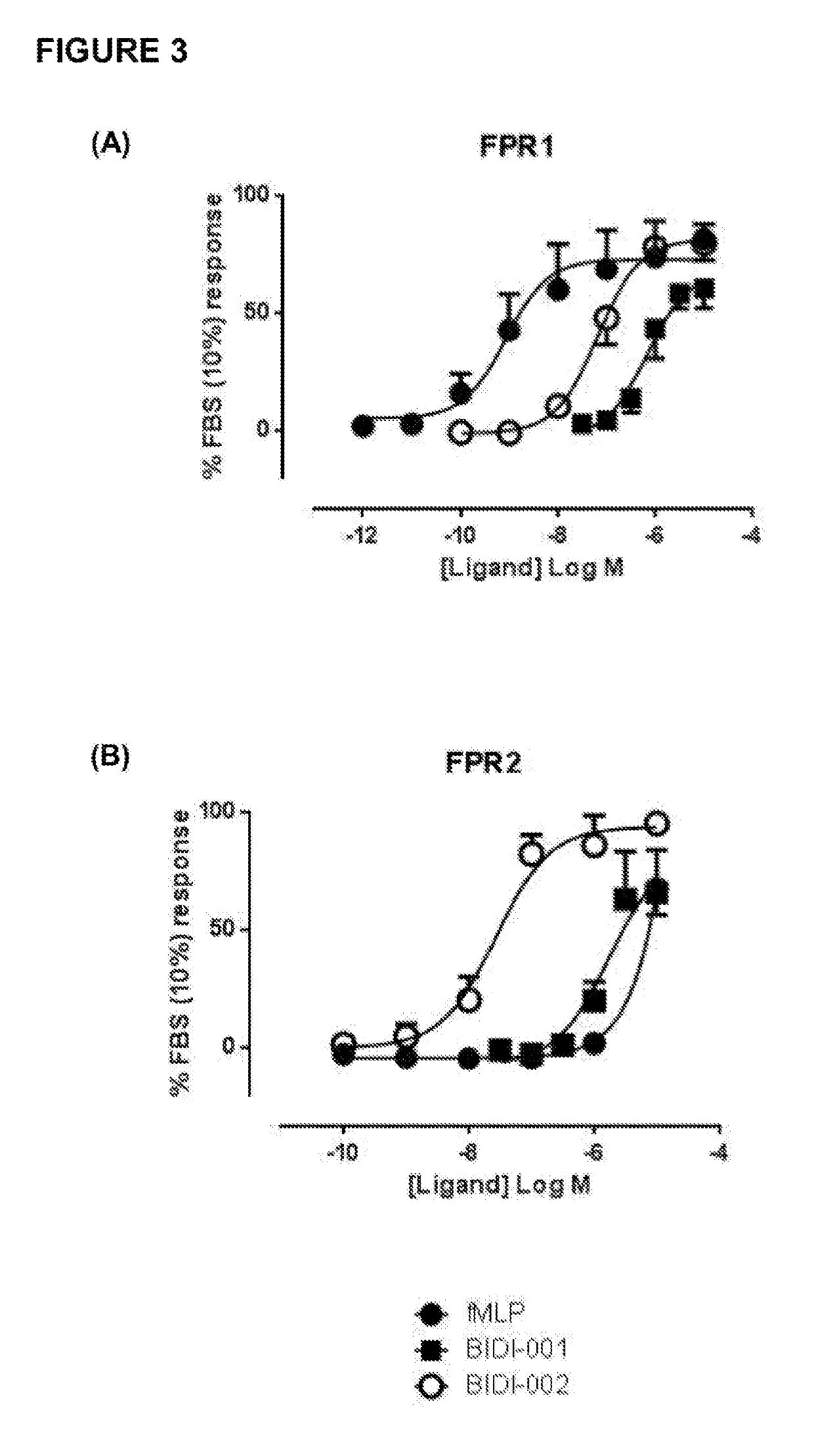Method of treatment and compounds for use therein
a myocardial tissue damage and treatment method technology, applied in the field of therapeutically or prophylactically treating ischaemia can solve the problems of further myocardial damage, ineffective targeting of individual cytokines, and impaired lv function, and achieve the effect of minimising the extent of ischaemia-induced myocardial tissue damag
- Summary
- Abstract
- Description
- Claims
- Application Information
AI Technical Summary
Benefits of technology
Problems solved by technology
Method used
Image
Examples
example 1
In Vitro Analysis
Materials and Methods
[0723]SurefireERK1 / 2 phosphorylation, Akt1 / 2 / 3 phosphorylation and cAMP accumulation kits were purchased from PerkinElmer Life and Analytical Science (Waltham, Mass., USA). FIp-IN Chinese hamster ovary (CHO) cells, Gateway plasmid, hygromycin B, Fluo-4M were obtained from Invitrogen (Carlsbad, Calif., USA). Dulbecco's modified eagle medium (DMEM) and fetal bovine serum (FBS) were purchased from Gibco (Gaithersburg, Md., USA) and JRH Biosciences (Lenexa, Kans., USA). Ac2-26 was synthesized by Chemileliva (Chongqing, China), and BIDI-001 and BIDI-002 by Anthem Bioscience (Bangalore, India). All other materials were purchased from Sigma-Aldrich (St. Louis, USA) except where indicated, and were of analytic grade or higher.
[0724]Compounds: The following four compounds are referred to in the Examples.
[0725]
[0726]Animals: All animal research was conducted in accordance with the National Health and Medical Research of Australian guidelines, and approval...
example 2
In Vivo Analysis
Materials and Methods
[0745]Animals and surgery: All animal research was conducted in accordance with the National Health and Medical Research of Australian guidelines, and approval was obtained from the Alfred Medical Research of Education Precinct (AMREP) Animal Ethics Committee.
[0746]Male C57BL / 6 mice were breed and housed in the AMREP Animal Centre and maintained under a 12 h light / dark cycle. After anaesthesia (i.p., ketamine 80 mg / kg, xylazine 20 mg / kg and atropine 1.2 mg / kg), mice were randomly assigned to 24 h, 48 h and 7 days reperfusion groups and underwent reversible left arterial descending (LAD) ligation as described (Gao XM, 2011; JMCC, 50; Gao XM, 2000, JMCC). Following sedation, mice were intubated and ventilated (Harvard apparatus, MA, USA) with room air mixed with oxygen (tidal volume 0.25 mL, 150 breath / min), and placed on a heating pad. A left thoractomy will be made via the ˜third intercostal space, where the beating heart was located.
[0747]The LA...
example 3
Further In Vivo Analysis
[0765]Animals: All animal research was conducted in accordance with the National Health and Medical Research of Australian guidelines, and the approval was obtained from the Alfred Medical Research Education Precinct (AMREP) Animal Ethics Committee. Neonatal (1-2 day old) Sprague-Dawley rats (mixed sex) and adult male C57BL / 6 mice were bred and housed in the AMREP Animal Centre and maintained under a 12 h light / dark cycle. All reagents were purchased from Sigma-Aldrich (St. Louis, USA) except where indicated, and were of analytic grade or higher.
[0766]Animal Surgery: Adult C57BL / 6 mice were randomly assigned to myocardial ischemia-reperfusion (I-R) injury or sham in vivo. Anesthetized mice (ketamine 80 mg / kg, xylazine 20 mg / kg and atropine 1.2 mg / kg, KXA, i.p.) underwent reversible left arterial descending (LAD) ligation as described (Gao et al. 2000 & Gao et al. 2011). Following sedation, mice were intubated and ventilated (Harvard apparatus, MA, USA) with r...
PUM
| Property | Measurement | Unit |
|---|---|---|
| body weight | aaaaa | aaaaa |
| pH | aaaaa | aaaaa |
| time- | aaaaa | aaaaa |
Abstract
Description
Claims
Application Information
 Login to View More
Login to View More - R&D Engineer
- R&D Manager
- IP Professional
- Industry Leading Data Capabilities
- Powerful AI technology
- Patent DNA Extraction
Browse by: Latest US Patents, China's latest patents, Technical Efficacy Thesaurus, Application Domain, Technology Topic, Popular Technical Reports.
© 2024 PatSnap. All rights reserved.Legal|Privacy policy|Modern Slavery Act Transparency Statement|Sitemap|About US| Contact US: help@patsnap.com










